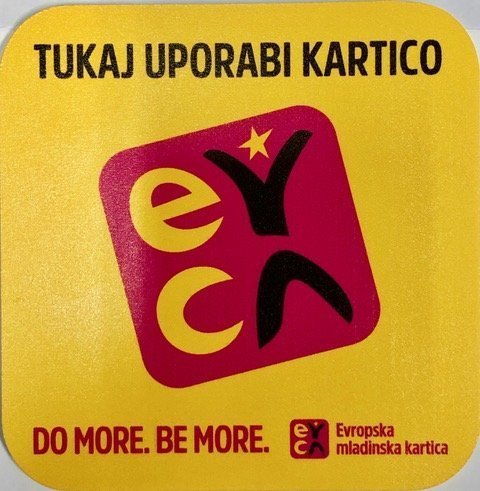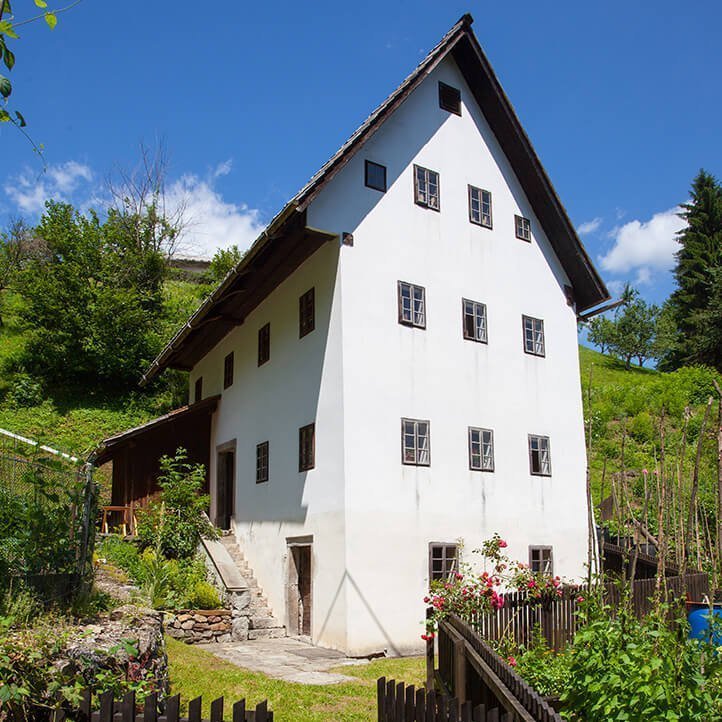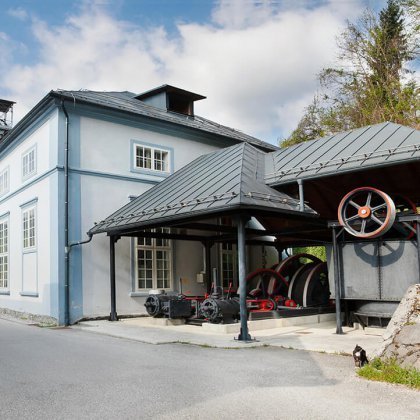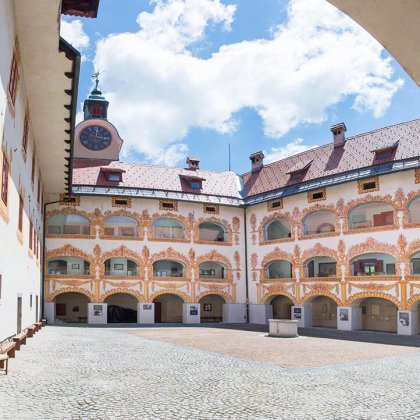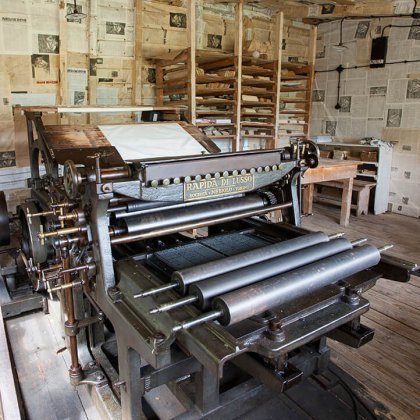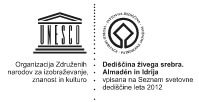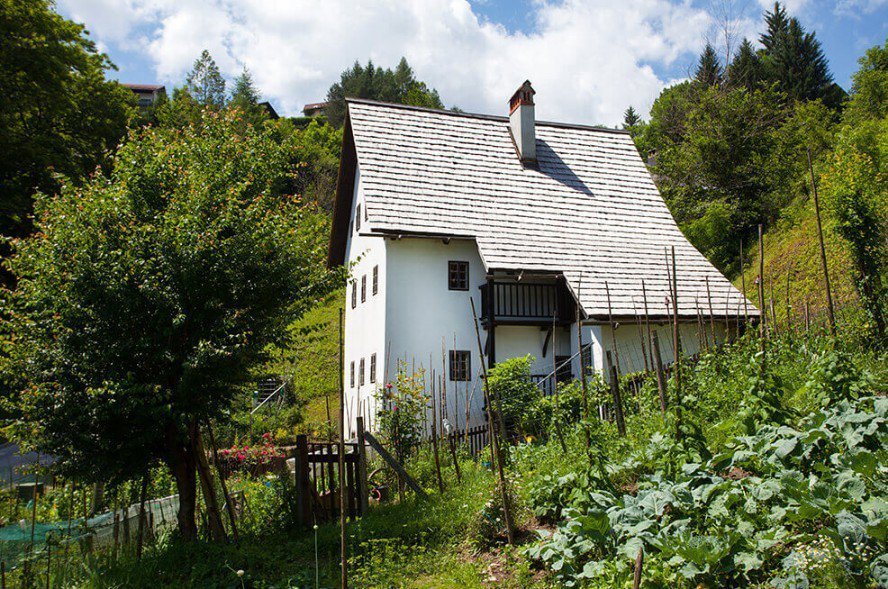
Our Miner’s House
On a slope not far from the city centre and surrounded with green gardens, there is one of the last miner’s houses, which shaped the image of the city and reflected the working character of Idrija. It was built in the second half of the 18th century near the Francis’ Shaft, where the technical department of the museum stands today with restored mining machines and devices. Their house was called At the Blackbird’s. In 1910, three families were living there with as many as 18 members. The last resident and the owner was a seamstress Dora Kos (1912–1984). The museum purchased the house from the heirs and fully renovated it at the beginning of 1990s.
Does the Miner’s House have a roof to the sky?
The Idrijan Miner’s House is a special type of house, different from the Alpine house or its variant of Škofja Loka-Cerkno: it is embedded in a hillside and its characteristics are high and wooden construction, steep wooden roof, and extensions. It makes a mighty impression due to its height and whiteness. The construction of the house is wooden, except for the masonry foundation, the cellar in the ground floor and kitchens on every floor. External walls are weatherboarded in a fish-bone pattern, plastered with mortar and painted in white with quicklime. The roof is covered with fir shingles called “šinklni”. There’s a vegetable garden at the house.
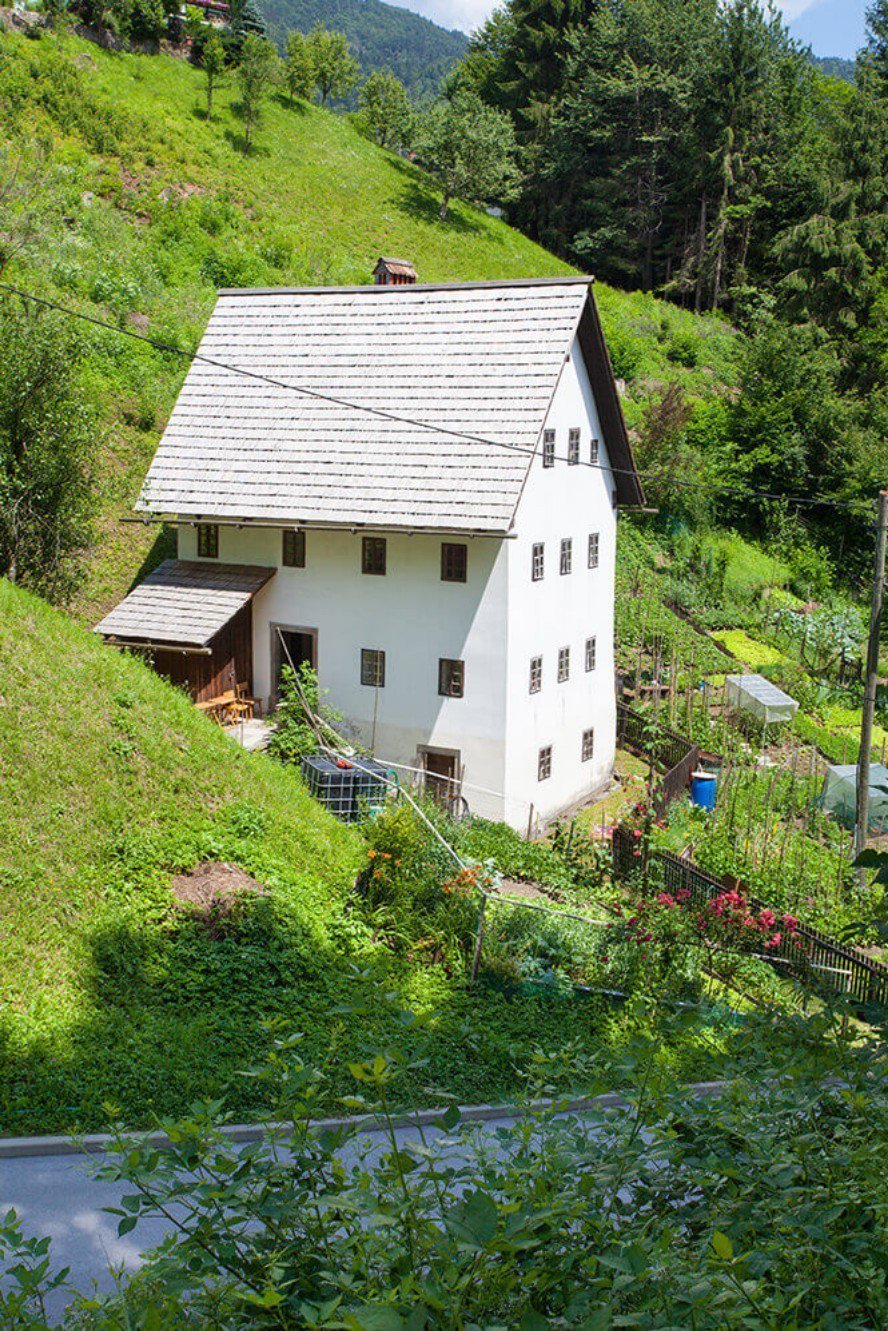
How did the mining families used to live?
A big housing shortage in town forced the miners to rent apartments as most of them couldn’t afford their own house. In addition to the owner’s family, one or two tenant families lived in the house, and often several young unmarried boys from the surrounding area who worked in the mine. The uniqueness of this Idrija Miner’s House is in the number of people living in it, so we could consider it a predecessor of the housing blocks – “prhavzi” that the mine administration started to build after 1870. The owner’s social status was better that the tenants’ since he was rearing animals in the cellar (hens, rabbits, a pig, sometimes even a cow), growing vegetables in the garden and getting rent twice a year. The tenants had to help with all major housework, such as preparing wood and cleaning the septic tank.
The equipment of the inner premises was humble in the first half of the 20th century, just as miners’ lives were. They had seven to eight members on average. A dining room with chairs and a wooden bench – “kanape” were in the main living space, called the house, a closet for clothes, a larger dresser – “šblatkostn” a brick oven in the corner, which heated up next door – den where there was usually one bed. The lack of space for sleeping forced families to imaginatively exploit other house equipment for this purpose: a “kanape”, chests, chairs. Until 1900, most of the houses had a black kitchen with a high open fireplace, and a dry toilet in the extension next to the kitchen. The basic layout of the premises was repeated on every floor, while two smaller rooms were created besides the main room in the roof part of the house — they are called “podstrešnica” or “podstražnca”. The wives and the girls socialised in the summer months and made lace on the “podiček” – a space before the entrance to the house. And on long winter nights, they made lace until early morning one day in one house and the next in another.
What is the Idrija Miner’s House hiding today?
After a visit to the Idrija Miner’s House, a visit of the furnished miner family’s apartment from the beginning of the 20th century and the black & white photographs of Idrija as it used to be, we take you to the humble everyday life of our ancestors, which was enriched by companionship, socialising and a sense of humour.
Programmes for adult groups
Idrija Miner’s House
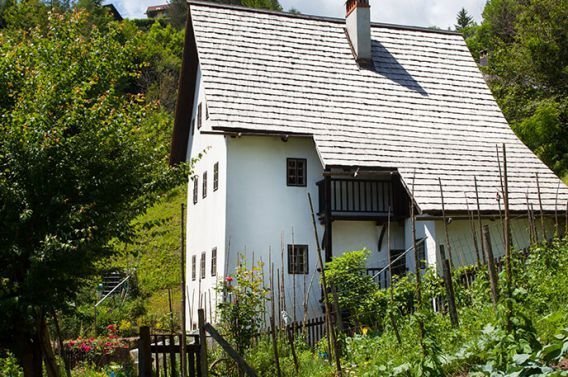
A true Idrija Miner’s House: narrow, tall, painted in white and embedded in a hillside, giving us an insight into the history and everyday life of mining families at the beginning of the 20th century. At that time, many housewives still cooked on an open fireplace, the men chewed tobacco, and the rooms were filled with the singing of birds. The Idrija Miner’s House reveals the habits, indulgences and secrets of the Idrija inhabitants in some other time. Would you like to play a game of volkalca with us?
School programmes
Idrija Miner’s House
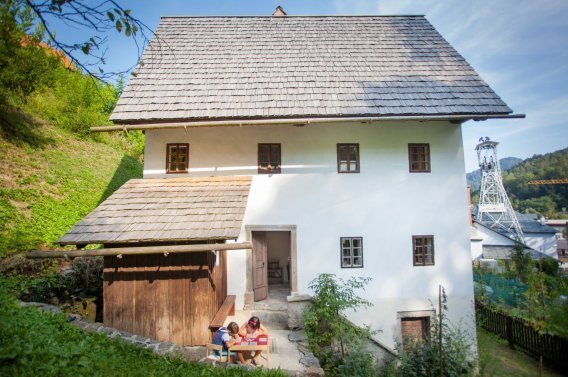
Opening hours
Idrija Miner’s House
Tour:
Special features
You can visit the house when accompanied by a museum guide arranged at Gewerkenegg Castle reception. After a walk through the city centre, you come to Rožna ulica street, then to Aumeški Square (Aumeški trg), where you turn left to the hill. After a 3-minute walk, the Idrija Miner’s House is right in front of you. The technical department of the museum in the Francis’ Shaft is nearby.
Scheduled groups can meet the museum guide at the location there. The house is about a 5-minute walk from the bus station.
